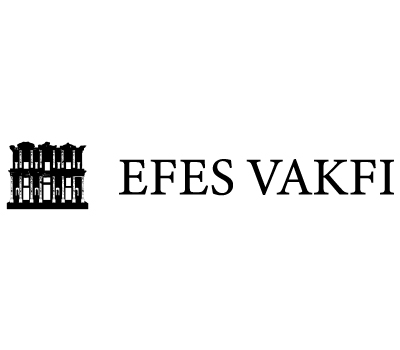Marble Hall 31
Unit 6
Residential Unit 6 is located in the lowest part of the Northern Terrace, to the northeast of Terrace House 2. In the 2nd century AD, this large residential unit, covering an area of 620 m2, was expanded southward to create a lavish city palace, spanning 950 m2, with the construction of the Marble Hall (31) and the basilica or apsidal hall (8).
Access to Residential Unit 6 was possible via Curetes Street, which featured a staircase leading up to the columned courtyard (31a). With its dimensions of 251.5 m2, the unit was an impressive structure due to its multi-storey nature and luxurious furnishings. Like the other formal rooms in Terrace House 2, the floors and walls of Unit 6 were adorned with marble. Twelve large columns with Corinthian capitals supported wooden column bases.
Located in the north of Unit 6, a spacious room (31b) measuring 25.5 m2 opened almost entirely onto the courtyard. Inside, traces of columns and wall cabinets suggested the presence of a small structure (aedicula), likely housing the family archives and library, as well as serving as the venue for family rituals.
The western portion of the expansive courtyard (31a) delineated the boundaries of partially heated other formal rooms (36c-e). In the 2nd construction phase around AD 120, Room 42 was redesigned, adorned with unique wall paintings influenced by the Western style despite its floor covered with classic and local carpets. During Construction Phase 2, a multi-room bathing complex (M1-3) was added to the former eastern passage of the columned courtyard (31a). Its entrance was on the western side, opening onto the columned courtyard through large arched glass windows. During the renovation phase, the southern passage was separated from the courtyard by railings, fences, and marble passageways.
In Construction Phase 4 (after AD 230), at the western end of the corridor, there was a marble-clad toilet and a staircase leading to the upper floor of the residential unit.
Marble Hall
The grand formal rooms were located in the southern part of the columned courtyard. Accessible from the southern promenade was the magnificent Marble Hall (31), spanning 178 m2. Used for banquets and receptions, the Marble Hall had enough space to accommodate at least nine spacious klinai (couches), where three people could recline. This luxurious space boasted highly valuable and expensive decorations, including marble-covered floors and walls, gold leaf, and carved wooden decorations on the ceiling, as well as fountains.
The large formal rooms west of the Marble Hall were as follows:
The spacious courtyard (36), covering an area of 58 m2, had a deep groin vault and was illuminated by a circular opening in the ceiling.
The apsidal hall (8), with an area of 80 m2, was situated adjacent to the building’s south side and accessed via a staircase framed by statues of Aphrodite. Used for hosting guests and feasts, this room’s original form was adorned with rich marble coverings and glass mosaics.
Passing through the door on the western wall, a small but meticulously decorated room measuring only 18 m2 was reached. Known as the ‘Stucco Room’ (8a), this room was reserved for intimate gatherings with close friends and cult rituals. Another meticulously decorated formal room (36a) opened onto the courtyard (36).
Adequate light was provided through two openings in the ceiling. In the clean water basin on the north wall of the room, decorative or food-preserved fish were kept.
A staircase (32a) in the courtyard (36) led up to the first floor of the lavishly furnished additional rooms of the building. While the first floor of the residential unit did not contain kitchens or similar production rooms and was solely used for presentation purposes, such rooms were found on the second floor.
Sponsors





